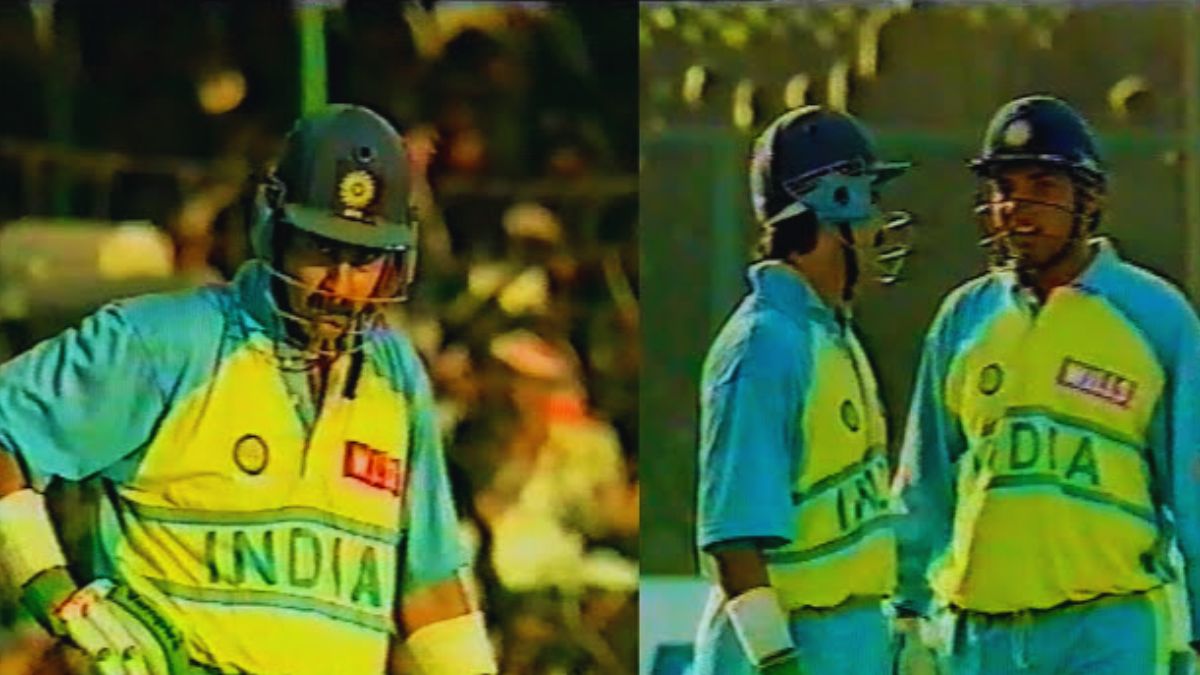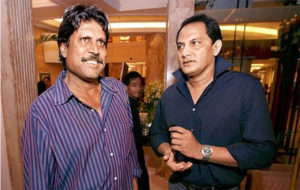The 2016 film ‘Azhar’ revisited the infamous chapter of match-fixing in Indian cricket, stirring the pot and sparking fresh debate about the murky world of game manipulation. While the film came with a disclaimer stating that it’s not intended to depict actual events and that the characters are fictional, it thrust a particular match from 1994 into the spotlight, one that bore eerie similarities to the ‘fictionalized’ games in the movie. The match in question has raised more questions than it has answered, blurring the lines between fact and fiction in the world of cricket.
Also Read: PCB Chief Zaka Ashraf Leaks WhatsApp Messages of Babar Azam
In ‘Azhar,’ we witness a match against the West Indies where a character named ‘Manoj’ is accused of selfish batting that led to India’s loss. The film portrays a heated confrontation between ‘Azhar’ (modeled after Mohammed Azharuddin) and ‘Manoj,’ resulting in a breach of trust within the team. What’s intriguing is that this fictionalized match bears a striking resemblance to a real match in the 1994 Wills World Series, a match that has been shrouded in controversy and suspicion.
1994 Wills World Series: Azhar Controversy
The real 1994 Wills World Series match was the fourth of the series and pitted India against the West Indies, who were going through a challenging phase. India had won their previous matches against the West Indies and New Zealand, both while chasing targets. The team was in top form, with Sachin Tendulkar and Mohammed Azharuddin leading the charge.
However, the match unfolded differently. An Indian bowling performance marred by two dropped catches, including ones by Vinod Kambli, set the stage for a challenging day. Manoj Prabhakar, known for his all-round abilities, had a forgettable first spell, finishing with figures of 6-0-50-0, which were far from impressive, especially in the pre-T20 era.
The blunders didn’t end there. Wicketkeeper Nayan Mongia missed a straightforward run-out opportunity, raising eyebrows. One key instance pointed out several times was when Mongia inexplicably failed to run out Anderson Cummins, who had been promoted in the batting order ahead of more seasoned players.
In hindsight, one could argue that Mongia might have wanted to dismiss the more dangerous batsman, Keith Arthurton, at the non-striker’s end. Nevertheless, Cummins was given ample time to reach the crease as Mongia hesitated to throw, a moment etched in the collective memory of Indian cricket fans.
India’s Chase of 258
In India’s response, the strategy was straightforward: Prabhakar would anchor one end while his partners, including Sachin Tendulkar and Azharuddin, attacked all bowlers except the formidable Courtney Walsh. However, the intrigue began when Sachin departed for 34 runs. Sidhu, inexplicably deprived of strike, was run out by a direct hit by Holder at the non-striker’s end.
Azhar initially seemed to have control of the chase, but his dismissal for 26 added to India’s woes. Run-outs continued to plague the team, with Kambli and Jadeja falling victim to direct hits. Prabhakar, who scored just 50 runs from 92 balls, was left to witness the dramatic downturn. While the film ‘Azhar’ accused Prabhakar of throwing the match, the cricketer defended his actions, stating that he had been instructed not to lose wickets and had faced only 11 balls out of the last 48, scoring just 9 runs.
As India required 63 runs off 54 balls, the partnership between Prabhakar and Mongia inexplicably blocked 16 runs. Frustrated fans left the stadium as India surrendered to a surprisingly easy West Indies victory.
The enigmatic Nayan Mongia adds another layer of mystery to this match. Despite his direct association with Azharuddin in match-fixing allegations, Mongia remains conspicuously absent from the 2016 film. Mongia, a skilled wicketkeeper with a contradictory reputation, has been a subject of intrigue in Indian cricket. While some saw him as street-smart and gutsy, others viewed him as selfish and unwelcome. Ravi Shastri once famously expressed irritation at the mention of Mongia’s name.
CBI Investigation
The CBI concluded that there was no evidence of Mongia receiving money to underperform, in contrast to Azharuddin. However, Azhar’s confession to the CBI in 2001 marked the end of his career, and Mongia’s cricketing journey took a similar turn.
Mongia’s explanation of the 1994 match revolves around a noisy dressing room and a ‘general consensus’ not to lose wickets, allegedly to maintain the ‘quotient.’ However, Sachin Tendulkar, the vice-captain for that match, insisted there were no instructions from the management to bat slowly, and he expressed his anger towards Prabhakar and Mongia for their inexplicable tactics.
In the complex world of cricket, match results are challenging to manipulate, and peculiar events should be attributed to the nuances of the sport rather than to unfounded suspicions. The 1994 match may have simply been a bad day at the office for Nayan Mongia, Manoj Prabhakar, and the rest of the team. It serves as a reminder that without substantial evidence, we should be cautious about casting doubt on the integrity of the game.
As cricket enthusiasts, we must rely on facts and credible information to make informed judgments. In the end, India clinched the final of the World Series, defeating the same West Indies team by a substantial margin. Prabhakar and Mongia, however, were replaced in the team due to their suspicious actions during that match, and the match itself remains a curious footnote in the history of cricket.





